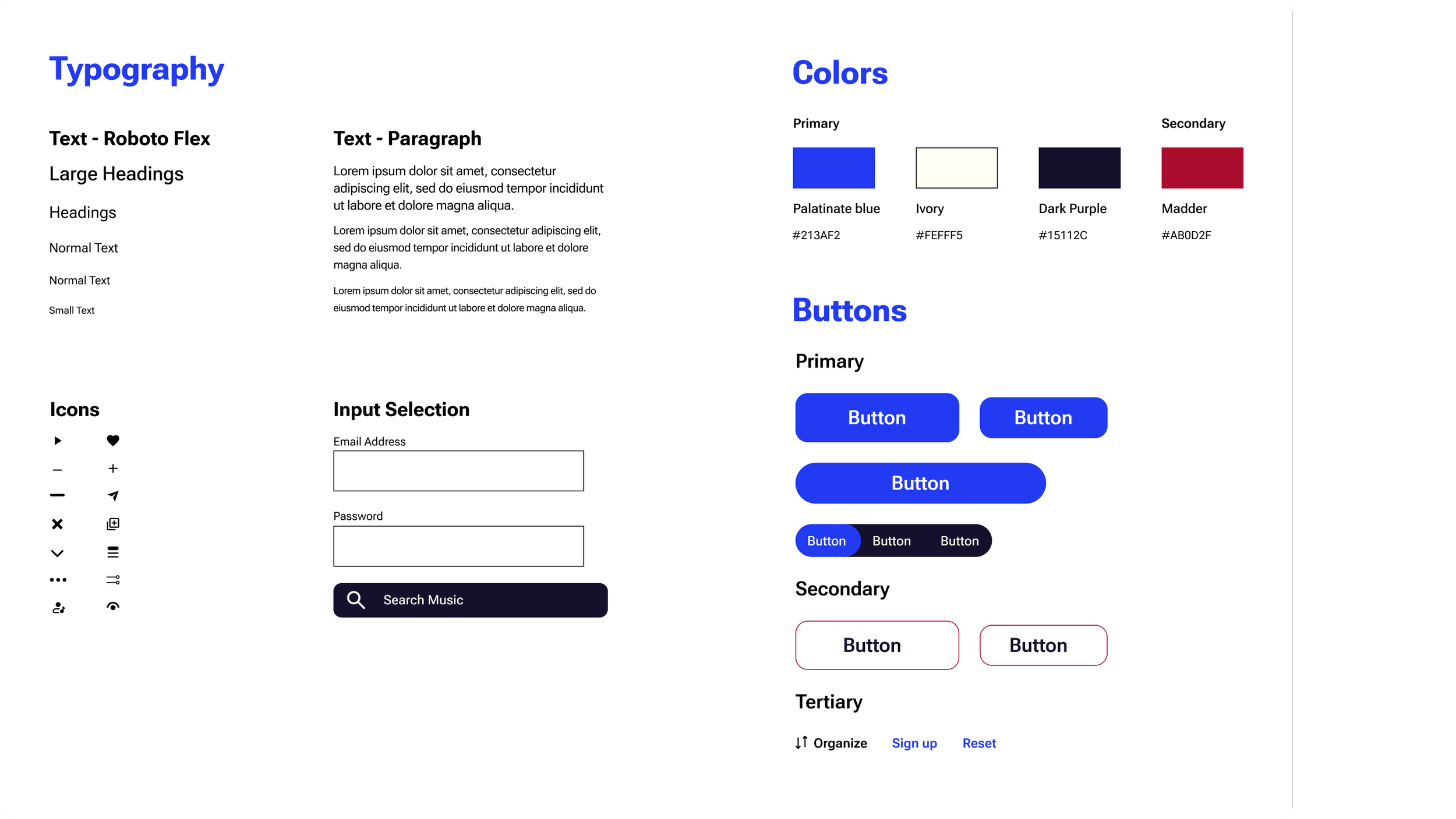Riffle Media App
Streaming platform for music, movie, and audiobooks
Overview
Parameters
Timeline:
March 2025 - June 2025
My Role
This project aims to provide users with a platform where they can stream music, movies, and audiobooks
The Problem
Solution
Solo UI/UX Designer
Solo UX Researcher
Solo Product Designer
Deliverables
The Main Insights:
Theme 1: Media
Users want access to the same catalog as the leading streaming services
Seamless transition between media types
Content recommendations that make sense
Theme 2: Premium Offerings
Users don't like ads and would pay up to get rid of them
Users want to try premium before upgrading
Users want full access to capabilities if they are paying
Competitive Research
One-on-one Interviews
Personas
Heuristic Analysis
User Flows & Site Map
Low Fidelity Wireframes
High Fidelity Wireframes
Prototype
Usability Testing
Users need multiple apps to keep up with their media needs
Users want one place to access multiple media types at the same time
Users want to access multiple media types at the same time
A platform that:
Provides music, movies, and audiobooks in the same place.
Allows for organization and easy navigation between media types.
Curates playlists and recommendations based on user preferences.
Business Goals:
Integrate opportunities for new users to subscribe to the premium offering during the registration process.
provide returning free users with seamless upgrade options both during sign-in and within the product experience after logging in.
A key secondary objective is the development and rollout of premium features that deliver clear added value to subscribers.
No major media apps offer streaming for music, movies, and audiobooks in one seamless interface.
To gain a better understanding of users, I recruited four participants for one-on-one interviews. Here is what I learned:
Affinity Map
To gain a better understanding of the data, I created an affinity map, breaking 26 data points into three themes: Frustrations, Discovery, and Ideal Experience
Persona
I created a persona in order to identify the needs, behaviors, experiences, and pain-points of users.
How Might We Statements
1. How might we help users discover new music, movies, and audiobooks?
Users struggle to find content recommendations which align with their media preferences.
Solution idea: Content recommendations based on previously watched/listened, filters, and popular among other users.
Research
Primary Research
2. How might we let users explore content across different media types?
A lack of consistency across media platforms can cause difficulty in navigating to preferred content.
Solution idea: Thoughtful and intuitive layouts which allow the users to navigate between media types.
3. How might we differentiate between free and paid content?
A lack of clear boundaries between free and paid content can cause frustrations.
Solution idea: A free version could include limited content access, occasional ads, and restricted skips for songs and audiobooks.
4. How might we encourage users to purchase a subscription?
Users need to feel as though upgrading is worthwhile and will improve their experience.
Solution idea: Differentiation of subscription types and clear ideas on what the user benefits from with each subscription tier.
User Flows
After conducting a heuristic analysis on leaders in the streaming industry, I created a user flow to begin mapping out my solution.
Design System
Final Designs
Sketching and Wireframes
After brainstorming some ideas I sketched out some designs and then turned those ideas into low-fidelity wireframes which could be tested with users.
I created a design system with some of the most important elements.
High-Fidelity Designs
After conducting two rounds of usability testing and a rigorous iteration process, these are the final designs.
Usability Testing Feedback
After two rounds of usability testing with users, these are three of the areas that were addressed and improved.
1. Unclear and confusing headers
Users found some of the labeling to be unclear
The phrase “continue enjoying” was confusing for a first time user
Solution - Replace “continue enjoying” with “Dive In”
2. Better organizational options
Users expressed a desire for more robust organizational tools to better manage and sort their libraries
Implementation of a banner with sorting options
Solution - Added an organizational banner
3. Search bar sparked confusion
“What are you feeling” was taken literally during user usability testing
Misunderstandings about search features intended function
Solution - Simplified search function
Key Takeaways
Incorporated valuable feedback from peers and mentors to refine and enhance the final deliverable.
Learned to balance business constraints with design vision to meet client expectations.
Maintained a consistent project timeline despite minor setbacks, meeting a key personal goal.
Achieved a well-rounded outcome by evenly distributing time across research, analysis, and design phases.
Starting with secondary research:
I gathered information from many of the leading competitors on applications providing music, movie, and audiobook streaming.
My goal was to learn which offerings work well and how I might be able to incorporate ideas into my own platform offering all three media types.
I also set out to see the differences in free to paid versions for each of these applications.
All of the major platforms share common limitations with the exception of Spotify: they operate in silos, offering no unified experience across media formats.
Personalization is restricted to one type of content, discovery tools are confined to each app’s library, and there’s no intelligent linkage between a movie, its soundtrack, and the book it was based on.
Most competitors lack mood or context based recommendations, which are particularly important for the emotionally driven consumption habits of Gen Z users.
While some platforms like Spotify and YouTube Music offer mood-centric playlists, this approach doesn't extend into film or literature.














